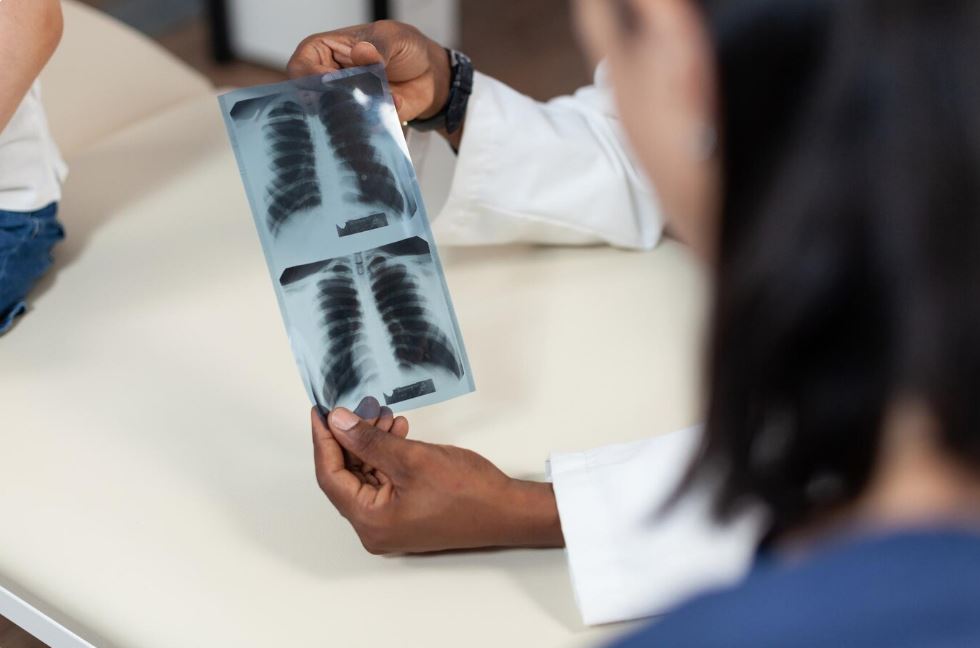
Workers have long endured harsh working conditions deep underground in coal mines to power economies and industries. However, black lung disease, a crippling and frequently fatal ailment that has afflicted miners for generations, poses a silent and sneaky threat. Black lung is still a major concern for many miners despite improvements in workplace safety and regulations, especially in areas where coal mining is still a major industry. However, there is hope for the future as awareness and research grow, providing a more positive outlook for treatment and prevention.
Fundamentally, coal worker’s pneumoconiosis (CWP), also referred to as black lung disease, is a lung ailment brought on by prolonged coal dust inhalation. After being inhaled, the particles lodge in the lungs, where the body finds it difficult to release them. This causes inflammation and scarring, which gradually deteriorates lung function and causes crippling symptoms. Coal miners’ lives, as well as those of their families and communities, are impacted by the disease, which has a significant toll.
| Type of Black Lung Disease | Description | Risk of Progression | Common Symptoms |
|---|---|---|---|
| Simple CWP | Small black spots and early-stage scarring of the lungs | Slower progression, manageable | Cough, shortness of breath, fatigue |
| Complicated CWP (PMF) | Severe scarring and large masses of fibrosis in the lungs | Rapid progression, extreme lung damage | Difficulty breathing, chest tightness |
Exposing the Factors That Make Coal Dust So Dangerous
A deadly particle that can have disastrous effects on the lungs when inhaled over time, coal dust is not your typical irritant. Particularly at risk are those who work in underground mines, where exposure to dust is highest. An inflammatory reaction is triggered when the tiny dust particles enter the lungs. This causes fibrosis, or scar tissue, to form over time, which can significantly impair breathing.
Black lung disease can range in severity, but it usually falls into one of two categories: simple CWP or complicated CWP. While the latter, called progressive massive fibrosis (PMF), involves large, dense masses of scar tissue that make breathing extremely difficult, the former is characterized by the presence of small black spots on X-rays or CT scans.
A Silent Killer: Signs and Consequences Over Time
Black lung disease frequently takes years or even decades to develop, in contrast to more recent injuries or illnesses. Many impacted employees do not start to notice any effects until after retirement, and symptoms can be mild at first. When symptoms do show up, though, they can be remarkably similar to those of other respiratory disorders, which makes diagnosis challenging.
Without appropriate treatment, these symptoms can significantly lower a person’s quality of life and make it harder for them to do even simple tasks. They also have a tendency to get worse over time. Lung cancer, heart failure, and chronic obstructive pulmonary disease (COPD) can result from progressive massive fibrosis (PMF) in its most severe form.
Treatment: Handling the harm but not finding a solution
Unfortunately, black lung disease does not currently have a cure. Scarring is irreversible once it happens. But with the correct strategy, the disease’s progression can be slowed, and symptoms can be controlled to enhance the patient’s quality of life.
Typically, treatment consists of:
Because oxygen therapy helps maintain appropriate blood oxygen levels, it can be extremely helpful for people who suffer from severe shortness of breath.
- Medication: To help open airways and facilitate breathing, doctors frequently prescribe bronchodilators and inhalers.
- Exercises specifically created to strengthen the respiratory system and increase lung capacity are known as pulmonary rehabilitation.
- Lung transplant: In rare instances, a lung transplant may be considered if the disease has progressed to a critical stage.
Despite the lack of a cure, people with this crippling illness have hope thanks to the available treatment options. As the severity of the disease is increasingly recognized, research into improved therapies and possible cures continues.
Prevention: An Avoidable Illness
Black lung disease can be avoided, which is good news. Coal miners have been at increased risk for many years, but new laws and safety precautions are starting to change that. Important preventative techniques consist of:
- Wearing respirators: Miners can prevent inhaling dangerous particles by wearing NIOSH-certified masks that filter coal dust from the air.
- Frequent chest X-rays: Before black lung disease worsens, routine examinations can identify its early symptoms.
- Good hygiene: To get dust off their skin and clothes, miners should wash their hands and faces after work.
Significant progress has been made in lowering the number of new cases thanks to workplace regulations, such as federal dust level limits. Nonetheless, exposure to coal dust is still a risk in some mining areas, especially in the Appalachian region.
Investigation and Prospects for the Future
The battle against black lung disease is still developing as we look to the future. Those who are at risk have hope thanks to research into safer practices and more effective treatments. The significance of improved mine safety precautions and early detection using cutting-edge imaging technologies is being highlighted by new research. Furthermore, advancements in the treatment of lung disease may enable those who are impacted to live longer, healthier lives in spite of their illness.
Black lung disease is no longer a silent epidemic in the context of contemporary mining. While there is still work to be done, the future appears bright for miners as it is being addressed with greater urgency. It is hoped that future generations won’t have to endure this avoidable illness thanks to enhanced safety procedures, easier access to healthcare, and continuous medical advancements.
